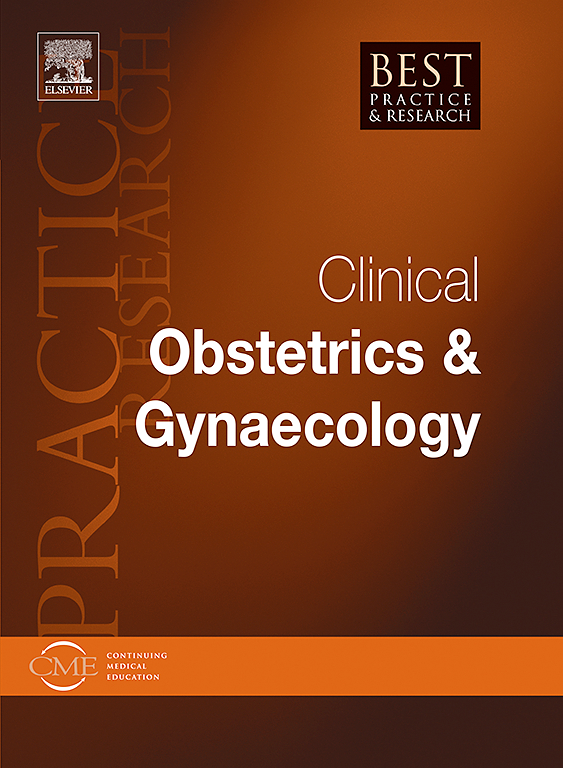Maternal hemodynamics in early and late fetal growth restriction
IF 4.1
2区 医学
Q1 OBSTETRICS & GYNECOLOGY
Best Practice & Research Clinical Obstetrics & Gynaecology
Pub Date : 2025-06-05
DOI:10.1016/j.bpobgyn.2025.102618
引用次数: 0
Abstract
Fetal growth restriction is a challenging condition for the obstetricians associated to neonatal morbidity, unfavorable developmental outcomes, and long-term sequalae for the newborn. Guidelines divide this condition in two subtypes: early and late forms depending on biometric, Doppler parameters, and the gestational age at appearance (before or after 32 weeks gestation).
This condition is associated to a maternal cardiovascular profile detectable in the pre-conceptional period, in the early stages of pregnancy, as well in the second and third trimester of pregnancy.
The maternal cardiovascular alterations are similar in the two subtypes of fetal growth restriction, although they differ in the degree of expression.
Echocardiography and other non invasive cardiovascular devices are very useful for the characterization of the maternal cardiovascular profile, and allow the early identification of patients at risk for this pathological condition.
The particular maternal hemodynamic profile at the base of the development of fetal growth restriction is characterized by a hypovolemic hypodynamic state. This particular cardiovascular condition might be susceptible to be modified by promising non pharmacological and pharmacological interventions, although they need further clinical investigations to be routinely used.
早期和晚期胎儿生长受限的母体血流动力学
胎儿生长受限对产科医生来说是一个具有挑战性的条件,与新生儿发病率、不利的发育结局和新生儿的长期后遗症有关。指南根据生物特征、多普勒参数和出现时的胎龄(妊娠32周之前或之后)将这种疾病分为两种亚型:早期和晚期形式。这种情况与孕前、妊娠早期以及妊娠中期和晚期可检测到的母体心血管状况有关。在两种胎儿生长受限亚型中,母体心血管的改变是相似的,尽管它们的表达程度不同。超声心动图和其他非侵入性心血管设备对产妇心血管特征的表征非常有用,并允许早期识别有这种病理状况风险的患者。在胎儿发育受限的基础上,特殊的母体血流动力学特征是低血容量低动力学状态。这种特殊的心血管疾病可能容易通过有希望的非药物和药物干预来改变,尽管它们需要进一步的临床研究才能常规使用。
本文章由计算机程序翻译,如有差异,请以英文原文为准。
求助全文
约1分钟内获得全文
求助全文
来源期刊
CiteScore
9.40
自引率
1.80%
发文量
113
审稿时长
54 days
期刊介绍:
In practical paperback format, each 200 page topic-based issue of Best Practice & Research Clinical Obstetrics & Gynaecology will provide a comprehensive review of current clinical practice and thinking within the specialties of obstetrics and gynaecology.
All chapters take the form of practical, evidence-based reviews that seek to address key clinical issues of diagnosis, treatment and patient management.
Each issue follows a problem-orientated approach that focuses on the key questions to be addressed, clearly defining what is known and not known. Management will be described in practical terms so that it can be applied to the individual patient.

 求助内容:
求助内容: 应助结果提醒方式:
应助结果提醒方式:


